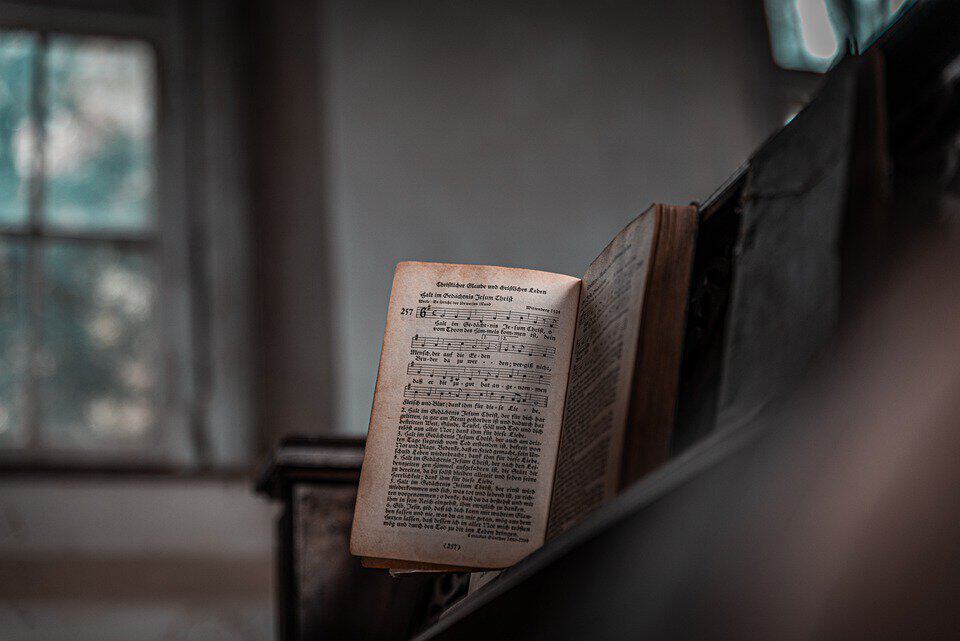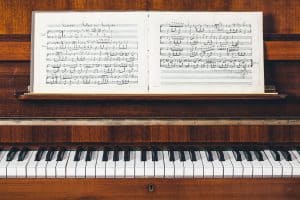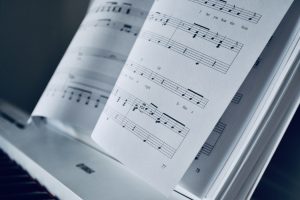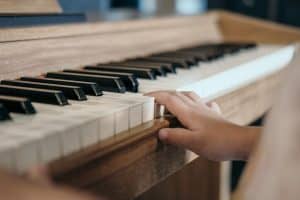What is sight reading in music? Sight reading when a musician reads a piece of sheet music they have never seen before. Whether you’re playing for your own enjoyment or performing in front of an audience, having the ability to sight-read can greatly enhance your playing abilities and musical knowledge.
Piano sight reading can be a challenging topic. However, with consistent practice it is possible to develop your skills and become a proficient sight reader. In this article, we will explore the basics of sight reading on the piano and provide some top tips and techniques to help you develop this useful skill.

What is piano sight reading?
Sight reading in music refers to the ability to read and perform a piece of music in real-time, without any practice or preparation. Sight reading is an essential skill for musicians, especially for those who perform frequently or work as session musicians.
Sight reading involves knowledge and proficiency in these key areas:
- Strong piano note reading skills
- Strong rhythm recognition
- Knowledge of music notation concepts such as keys, tempo and dynamic markings etc.
- Proficiency in your chosen instrument
- Audiation skills
Why is sight reading important?
Learning sight reading is a valuable skill for any musician. It can be a challenging ability to master. Sight reading can greatly enhance a musician’s ability to learn and perform new pieces and deepen their overall understanding and appreciation of music as a whole. It can also open up a wide variety of professional opportunities.
Learning sight reading is important for several reasons:
- Efficient learning – sight reading allows musicians to learn new pieces more efficiently. This is particularly useful for musicians who perform frequently, as they are often required to to meet tight performance deadlines.
- Improving musicianship – sight reading can help musicians to deepen their understanding of music, as it requires them to intuitively engage with musical notation and theory on a regular basis.
- Building confidence – being able to sight read well can help to build a musician’s confidence. It can allow you to tackle new and unfamiliar music with greater ease and assurance.
- Professional opportunities – for anyone looking to make a career in music, sight reading music is often an essential skill. Many professional musicians are required to sight read on a regular basis, whether as part of a studio session, in a pit orchestra or in other performance settings.
Top tips for piano sight reading
To begin with, it is important to understand that easy sight reading piano sheet music is not about playing the piece perfectly. Instead, it is about playing the piece solidly enough to convey the melody, rhythm and nature of the piece to the listener.
- Take a moment to look at the time and key signatures to know what time signature and key you are in.
- Look at the phrases, structure of the piece and any repeats or codas. This will give you an idea of what to expect and help you stay on track as you play and allow you to plan fingerings.
- Follow the rhythm of the piece through before you start, noting any tricky passages that will require extra focus. Watch out for ties, passing notes and dotted notes. These concepts require attention to execute well.
- When playing try to anticipate what is coming next. As you play, keep your eyes ahead of where you are playing and try to look at the notes in advance.
- Be sure to practice your musical fundamentals such as scales, arpeggios, rhythm values and reading clefs etc. This is the language that conveys music in the way that words make up sentences and phrases.
Skoove’s newly updated piano course has lessons on sight reading, with valuable tips and tricks you can incorporate into your piano practice today. Practicing sight reading can be tricky but consistent effort can produce considerable results in a short time!
Piano sight reading exercises for beginners
Knowing how to practice sight reading without help can often be a daunting task. To improve your piano sight reading practice online regularly with Skoove and gradually increase the difficulty of the exercises as you become more comfortable. Here are some great step by step sight reading piano exercises to help you progress.
Exercise 1: Select a piece of sheet music you haven’t played before and give yourself a short while to examine the treble clef notes before playing. Then, try playing the piece at a slow tempo, focusing on playing the correct rhythm and notes on the piano. Don’t worry about playing with dynamics too much articulation yet, just focus on the basics.
Exercise 2: Continue with another simple piece of music with a repeating pattern,simple sight reading, such as “Twinkle, Twinkle, Little Star“. Play the piece at a slow tempo, and then try gradually increasing the tempo with each repetition. This will help you build up your sight reading speed. The Skoove app is an ideal way to do this.
Exercise 3: Take a piece of music you know well and try playing the bass clef notes. This will challenge you to read another clef and become more flexible in your sight reading abilities.
Exercise 4: Try playing a piece of music with only one hand at a time, such as a simple melody or chord progression. Then, switch to the other hand and try playing the same piece. This will help you become more comfortable with reading music with both hands and improve your overall piano playing skills.
Exercise 5:Practice playing scales in different keys and in different octaves. This will help you become more comfortable with reading music in different positions on the piano and improve your hand positioning and fingerings.
With consistent sight reading practice, you will become more confident in your sight reading abilities and be able to play new pieces with ease. Be sure to make use of the Skoove app as it has many great options for song choices and feedback and exercises to help you along your sight reading journey. We hope you learned a lot from this article. Keep up the good work!
Author of this blog post

Eddie Bond is a multi-instrumentalist performer, composer, and music instructor currently based in Seattle, Washington USA. He has performed extensively in the US, Canada, Argentina, and China, released over 40 albums, and has over a decade experience working with music students of all ages and ability levels.














